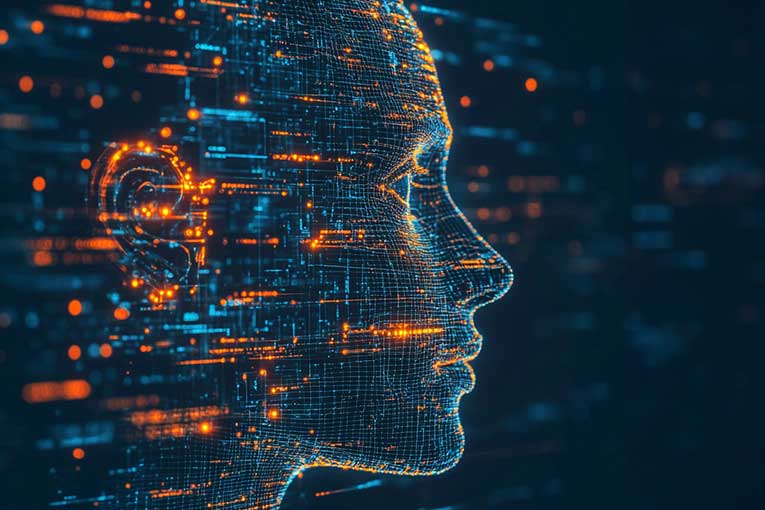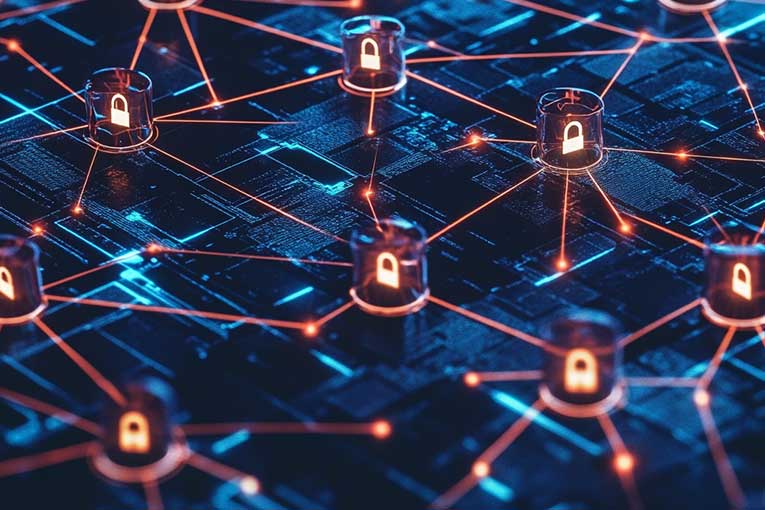Cyber Security News Aggregator
.Cyber Tzar
provide acyber security risk management
platform; including automated penetration tests and risk assesments culminating in a "cyber risk score" out of 1,000, just like a credit score.AI & Cybersecurity – The Complete Facts
published on 2025-07-01 07:00:00 UTC by Simon BurgeContent:
Artificial intelligence (AI) is transforming cybersecurity by providing advanced protection against cyber threats.
As cyberattacks become more sophisticated, traditional security measures often struggle to keep up.
AI offers a proactive approach, detecting and stopping threats before they cause damage.
Businesses, governments, and individuals rely on cybersecurity to protect sensitive data and digital infrastructure.
AI-powered cybersecurity solutions can analyse large amounts of data, identify threats, and respond instantly to attacks.
These capabilities make AI a valuable tool in modern cybersecurity strategies.
This article explores AI in cybersecurity, how it works, its use in different industries, real-world examples, benefits, and risks.
By understanding the impact of AI on cybersecurity, businesses and individuals can make informed decisions about using AI-driven security solutions.
What is AI Cybersecurity?

AI cybersecurity refers to the use of artificial intelligence (AI) technologies to protect digital systems, networks, and data from cyber threats.
Traditional cybersecurity relies on fixed rules and human intervention, but AI cybersecurity enhances protection by automating threat detection, analysis, and response.
AI-powered security systems use machine learning (ML), deep learning, and natural language processing (NLP) to detect suspicious activities and prevent cyberattacks.
These technologies enable AI to identify patterns, recognise anomalies, and predict future threats.
Unlike traditional security measures, AI can learn and adapt to new cyber threats, making it more effective in detecting emerging attacks.
AI cybersecurity is used to combat threats such as malware, phishing, ransomware, and hacking attempts.
It can analyse vast amounts of data in real time, reducing response times and improving security efficiency.
AI is widely used in businesses, government agencies, and personal cybersecurity applications to enhance digital protection and minimise cyber risks.
How Does AI Cybersecurity Work?

AI cybersecurity works by using artificial intelligence technologies to detect, analyse, and respond to cyber threats.
Unlike traditional cybersecurity, which relies on predefined rules and human intervention, AI-driven security systems continuously learn and adapt to new and evolving threats.
Data Collection and Analysis
AI cybersecurity systems gather vast amounts of data from networks, systems, and user activity.
This data includes login attempts, file transfers, and internet traffic patterns.
AI processes this information and identifies patterns to determine what is normal behaviour and what could indicate a potential threat.
Threat Detection and Prevention
AI detects threats using several methods:
- Anomaly Detection: AI compares real-time data to normal patterns and identifies unusual activity.
- Behavioural Analysis: AI monitors user and system behaviour to detect suspicious actions.
- Signature-Based Detection: AI compares incoming files with known malware signatures to identify harmful software.
Automated Threat Response
AI cybersecurity systems respond to threats instantly by taking actions such as:
- Blocking suspicious IP addresses and domains.
- Quarantining infected files to prevent malware from spreading.
- Alerting cybersecurity teams about potential security breaches.
Continuous Learning and Adaptation
AI cybersecurity is self-learning, meaning it improves over time.
It learns from past cyberattacks and adapts to new hacking techniques.
This allows AI to detect and respond to new types of cyber threats that traditional security systems might miss.
What Industries are Using AI Cybersecurity?

AI cybersecurity is being used across various industries to enhance security, detect threats, and prevent cyberattacks.
Many sectors rely on AI-driven security to protect sensitive data, financial transactions, and customer information.
Banking and Finance
The banking and finance sector is a prime target for cybercriminals due to the vast amounts of money and personal data involved.
AI cybersecurity helps banks detect fraudulent transactions, identity theft, and suspicious activities.
AI-powered systems monitor real-time transactions and alert security teams about potential threats.
Healthcare
Hospitals and healthcare providers store confidential patient records, making them a frequent target for cyberattacks.
AI cybersecurity protects electronic health records (EHRs), medical devices, and hospital networks from breaches.
It also helps detect ransomware attacks, which can cripple healthcare operations.
Government and Defence
Government agencies and defence organisations use AI to detect cyber espionage, prevent data breaches, and secure classified information.
AI helps monitor network activity and prevent attacks from hackers and foreign threats.
Retail and E-Commerce
Online retailers use AI cybersecurity to prevent fraud, secure customer payment details, and protect e-commerce platforms.
AI helps detect fake accounts, phishing attempts, and bot-driven attacks.
Technology and Telecommunications
Tech companies and telecom providers use AI to detect malware, prevent hacking attempts, and secure cloud-based services.
AI cybersecurity ensures safe communication networks and protects customer data from cyber threats.
AI Cybersecurity Examples
AI cybersecurity is widely used across different industries to detect threats, prevent cyberattacks, and enhance digital security.
Here are some key examples of how AI is applied in cybersecurity.
AI-Powered Threat Detection
AI systems like IBM Watson for Cyber Security and Darktrace use machine learning to detect unusual activity within networks.
These tools analyse vast amounts of data in real time and flag suspicious behaviour before an attack occurs.
Fraud Prevention in Banking
Financial institutions use AI-powered security systems such as Visa Advanced Authorization and Mastercard’s Decision Intelligence.
These tools detect fraudulent transactions by analysing spending patterns and identifying suspicious activity.
AI can also help in preventing identity theft and phishing scams.
Email and Phishing Protection
AI-based tools like Google’s AI-powered spam filters and Microsoft Defender help detect phishing emails.
AI scans email content, sender behaviour, and links to identify potential threats and prevent employees from falling victim to cyber scams.
Endpoint Security and Malware Detection
Companies like CrowdStrike and Cylance use AI to prevent malware infections on devices.
These tools predict, detect, and neutralise potential threats before they execute, reducing the risk of ransomware and other cyberattacks.
Automated Incident Response
AI cybersecurity platforms such as Cortex XSOAR (Palo Alto Networks) and Splunk automate responses to cyber threats.
These systems analyse attack patterns and take immediate action, such as access control or isolating compromised systems.
AI Cybersecurity Benefits

AI cybersecurity offers many advantages over traditional security methods by enhancing threat detection, response speed, and overall protection.
Here are some key benefits of using AI in cybersecurity.
Faster Threat Detection
AI cybersecurity can analyse vast amounts of data in real time, detecting threats much faster than human analysts.
By using machine learning algorithms, AI can recognise suspicious activities and potential attacks before they cause harm.
Improved Accuracy and Reduced False Positives
Traditional security systems often generate false alerts, leading to wasted time and resources.
AI cybersecurity tools learn from previous threats and improve accuracy, reducing false positives and ensuring only real threats are flagged.
Automated Threat Response
AI-powered security systems can automatically respond to threats without waiting for human intervention.
For example, AI can block malicious IP addresses, quarantine infected files, and isolate compromised systems, minimising damage from cyberattacks.
Adaptability to New Threats
Cyber threats are constantly evolving, and AI cybersecurity adapts by learning from new attack patterns.
Unlike traditional security measures that require manual updates, AI can continuously improve its detection capabilities.
Enhanced Fraud Detection
AI is widely used in banking and finance to detect fraudulent transactions in real time.
It analyses customer behaviour, transaction patterns, and anomalies to identify potential fraud and prevent financial losses.
Increased Efficiency for Security Teams
AI cybersecurity reduces the workload for IT security teams by handling repetitive tasks like log analysis, threat hunting, and vulnerability scanning.
This allows human experts to focus on more complex security issues.
AI Cybersecurity Risks

While AI cybersecurity offers many advantages, it also comes with several risks.
Cybercriminals can exploit AI, and improper implementation can create security vulnerabilities.
Here are some key risks of AI cybersecurity.
AI Can Be Manipulated
Cybercriminals can use adversarial attacks to trick AI systems.
By introducing small, undetectable changes to data, attackers can cause AI to misclassify threats or ignore malicious activities.
This could lead to false negatives, where real cyber threats go undetected.
AI Can Be Used for Cybercrime
Hackers are using AI to launch more advanced attacks.
AI-powered malware can adapt and evade detection, making it harder for security systems to block.
AI can also be used to create realistic phishing emails that trick users into sharing sensitive information.
Privacy Concerns
AI cybersecurity relies on large amounts of data to function effectively.
If this data includes personal or sensitive information, it could raise privacy concerns.
Improper handling of AI-driven security data could lead to unauthorised access and data breaches.
High Implementation Costs
AI cybersecurity solutions require specialised software, powerful computing resources, and skilled personnel to maintain them.
The high cost of AI security systems can make it difficult for small businesses to afford advanced protection.
Dependence on AI Can Reduce Human Oversight
Relying too much on AI cybersecurity can lead to reduced human involvement in security monitoring.
If AI fails to detect a threat, security teams may not realise it in time.
A balance between AI automation and human oversight is essential for effective cybersecurity.
Conclusion
You should now have more of an understanding of AI and Cybersecurity.
AI is playing an increasingly important role in cybersecurity, providing faster threat detection, automated responses, and improved accuracy.
It is used across various industries to protect financial transactions, healthcare records, government data, and more.
However, AI cybersecurity is not without risks.
High costs, false positives, and AI-powered cybercrime present challenges that organisations must address.
While AI can significantly enhance security, it should be used alongside traditional cybersecurity measures and human expertise.
As cyber threats continue to evolve, AI cybersecurity will remain a crucial tool in the fight against cybercrime.
Businesses and individuals must stay informed about AI security advancements and implement strong cybersecurity strategies to protect their digital assets.
https://securityjournaluk.com/ai-cybersecurity/
Published: 2025 07 01 07:00:00
Received: 2025 07 03 02:24:45
Feed: Security Journal UK
Source: Security Journal UK
Category: Security
Topic: Security
Views: 21
